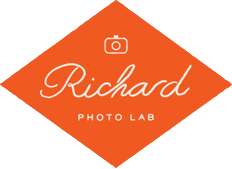
Welcome, photography enthusiasts and print lovers! Ever wondered why some of your photo prints come out crystal clear and vibrant while others seem a bit off? The secret often lies in a little thing called 'resolution.'
In today's world where we can snap, save, and share images at the touch of a button, understanding the role of resolution can seem a bit mystifying. But don’t worry, we’re here to demystify it for you.
Whether you're an aspiring photographer, a seasoned pro, or simply someone who loves to preserve memories in print, this blog post is for you. We will cover what resolution is, why it's important to have high resolution when printing, and tips for achieving high resolution prints.

What is resolution?
In the context of digital photos, resolution is a measure of the detail an image holds. It is usually referred to in terms of pixels. The more pixels an image has, the higher its resolution, and the more detail it can display. When you're printing a high-resolution photo, it generally means it will be clearer, crisper, and more detailed. For a print to be considered high quality, it needs to have a certain number of pixels per inch (PPI), with 300 PPI often cited as the standard for high-quality prints.
When talking about resolution, you may heard the term PPI and DPI. That can get a bit confusing! DPI stands for Dots Per Inch and is relevant for printers which print an image by placing a series of dots to create the image. PPI is for the digital image itself, and DPI is for the printed version.
Why is it important to have high resolution when printing?
There are a few reasons why:
- Detail & Clarity: High-resolution images contain more pixels, providing more detail and sharper, clearer prints. This is particularly important for larger prints where low-resolution images can appear pixelated or blurry.
- Color Accuracy: High-resolution images can reproduce colors more accurately. With more pixels, there is a better representation of color gradations and shades, which can make your print look more vivid and true-to-life.
- Avoid Pixelation: When a low-resolution photo is printed, especially in a large format, each pixel has to be enlarged to fill more space. This can result in a blocky or pixelated image where individual pixels are visible to the naked eye.
- Flexibility: High-resolution images are more versatile. They can be cropped or resized while still maintaining enough detail for a quality print.
So, for a high-quality print that accurately represents the original image, it's essential to start with a high-resolution photo.
Tips for achieving high-resolution prints:
- Understand your camera's settings: Use the highest quality setting on your camera. Most digital cameras allow you to adjust the resolution. Higher megapixels equate to higher resolution, which in turn means better print quality. Lower settings can compress the image, causing you to lose detail.
- Composition & Lighting: Good composition and lighting are important. A well-composed photo with balanced lighting will have more visible details, which can enhance the perception of resolution.
- Post-Processing: Use photo editing software to enhance your images. Tools like Adobe Photoshop or Lightroom allow you to adjust sharpness, contrast, and color balance which can enhance the perceived resolution of your images. Be mindful when resizing images -- ensure to maintain the aspect ratio to prevent distortion.
- File formats & Compression: Save your images in a high-quality format. JPEG is the most common format (and the one that we accept when you upload images to our website/ROES app). TIFF and PNG are other formats you can save your work under that preserve the quality of the image. Be sure to check what format your printer accepts before uploading your images.
- Choosing the Right Printer & Paper: The quality of your printer and paper can also affect the print resolution. Professional photo printers and high-quality photo-grade paper will you give you better results. Exceptional photographic prints are produced right here at the lab on our top-notch printers! Including our Chromira 5x ProLab, Nortisu Traditional Photo Printer, and our Canon ink-jet printers. We offer photo prints or fine art prints and a variety of paper types.
Armed with your new insights, are you set to print your high-resolution photos? Don't worry if you're unsure or hit a bump – we're here to assist. Give us a ring anytime, and our dedicated team will guide you to ensure your prints are nothing less than perfect.

